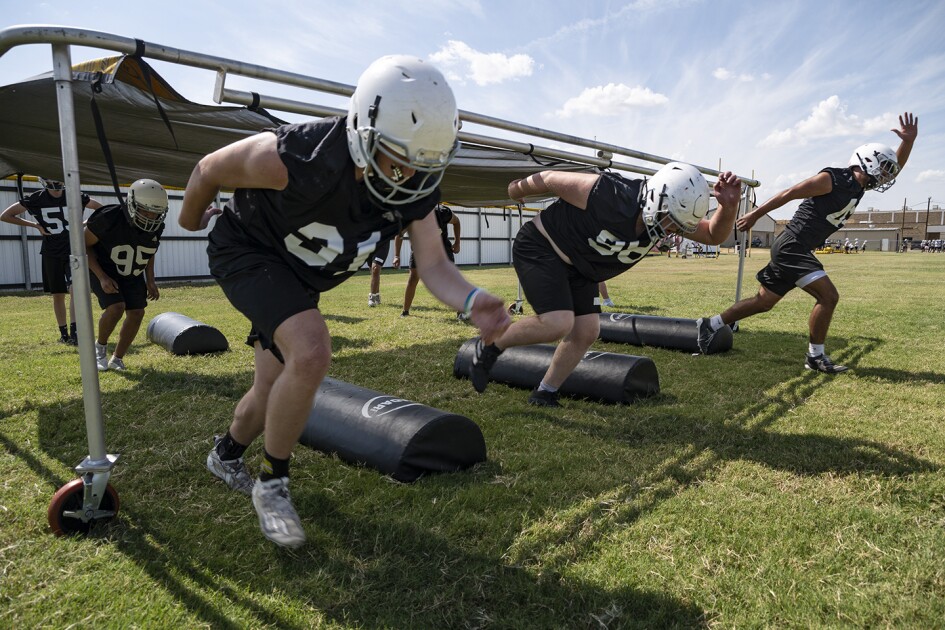Building positive school relationships may be the secret sauce for ensuring early warning systems are effective at getting at-risk students back on track.
A cohort of 49 middle and high schools that piloted retooled, relationship-centered approaches to supporting students saw reductions in course failure rates and chronic absenteeism in the first year, a new analysis finds.
The findings come as schools face high rates of chronic absenteeism and as they strain to serve a greater number of students with a deeper need for support following the disruptions of the COVID-19 pandemic, said a report released Tuesday by the GRAD Partnership, a coalition of nine education organizations that have supported schools in developing new approaches to that work.
“Some of the [support systems] we had pre-pandemic aren’t really working now,” said said Robert Balfanz, director of the Everyone Graduates Center at Johns Hopkins University, which helps lead the coalition. “We need these fresh insights.”
The schools’ efforts, known as “student success systems,” are the “next generation” of efforts like multi-tiered systems of support and early warning systems, both of which use data about factors like academics and attendance to identify students at risk of failure and target increasingly extensive interventions depending on individual levels of need, Balfanz said.
A February study by the Center for Education Policy Research at Harvard University identified flaws in traditional early warning systems. One large district’s system only affected attendance patterns for higher-income students, failing those from lower-income households, the study found.
The schools in the GRAD Partnership cohort are largely high-poverty, suggesting their results may be broadly effective for students from a variety of socioeconomic backgrounds, Balfanz said.
Putting relationships front and center
In addition to that traditional data, student success systems incorporate information about school climate; social-emotional learning; and students’ sense of connectedness, which is measured by simple, regularly administered surveys used to determine if they feel known and supported by adults and classmates.
Student support teams regularly review the data to flag classroom- and building-level concerns and to identify students who need targeted attention. In addition to traditional supports, like academic tutoring, those teams may take new approaches to building school connectedness, like involving at-risk students in extracurricular activities or introducing them to peers with similar interests.
It’s working, the new analysis found.
In the first year, the 41 pilot schools that reported academic data saw rates of students failing one or more courses drop from 25.5 percent in 2021–22 to to 20.5 percent in 2022–23. Rates of chronic absenteeism—defined as missing 10 percent of school days or more in a year—dropped from 27.5 percent to 21.4 percent in pilot schools.
Researchers also asked school leaders to evaluate their progress in implementing the student success system model using a rubric that rated their practices as “strong, solid, or partial.” Just two schools reported “strong” implementation. Schools with “solid” implementation saw more dramatic results than those with “partial” levels, the analysis found.
Interested in student success systems? The GRAD Partnership offers a planning tool for school and district leaders.
The work is built around research that suggests students have better results in school if they believe that there is an adult who cares about them, their work has value, and they feel welcome.
Schools where 50 or 60 students were flagged for supports before the pandemic now see hundreds of students identified by early-warning systems, Balfanz said. By focusing on connectedness first, schools have helped many of those students rebuild academic and social habits, and they are able to target more extensive academic and behavioral interventions on the remaining students who need them most, he said.
Balfanz and fellow researchers helped design the approach after getting feedback from 300 educators about their experiences during the pandemic.
“Teachers told us two things: ‘We have to do more [for students],’ and ‘We have to rebuild relationships with our kids first,’” Balfanz said.
The pilot schools have taken a variety of approaches to systemically building student connectedness.
In one high school, for example, teachers used sticky notes to build relationship maps, identifying how many adults believed they had a strong relationship with each student in the building to identify those who needed more outreach from educators.
Other schools have helped students build connectedness by expanding their extracurricular activities. One school, for example, assigned students roles such as drone operators and videographers for the football team to give them a new chance to establish a peer group, Balfanz said.
“Connectedness can seem like kind of a fuzzy concept, but if you operationalize it, you can measure it and address it,” he said.









